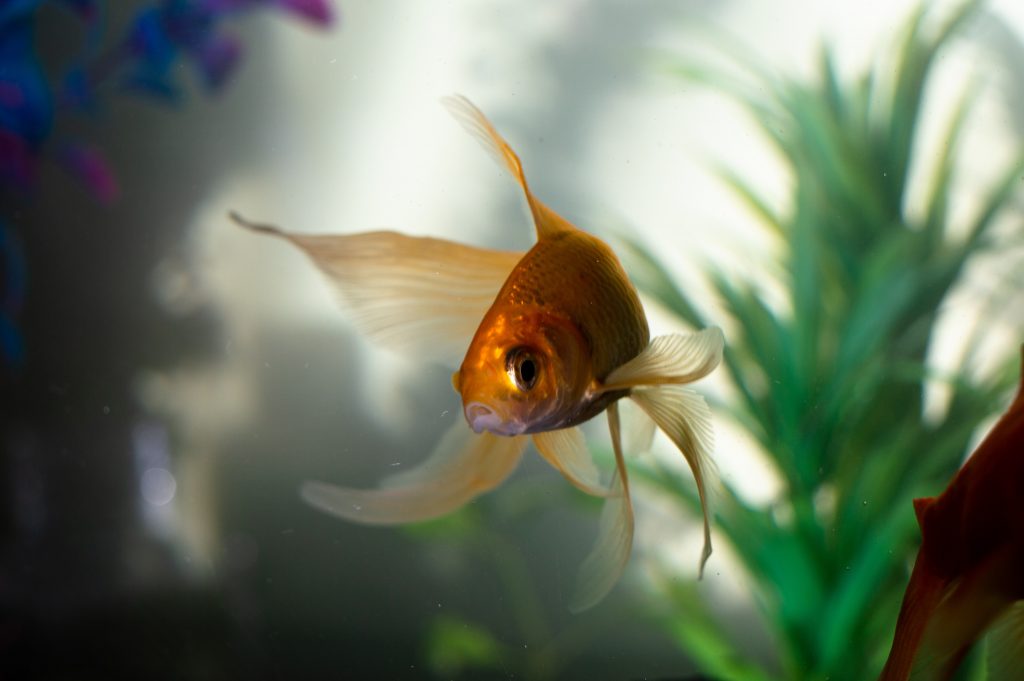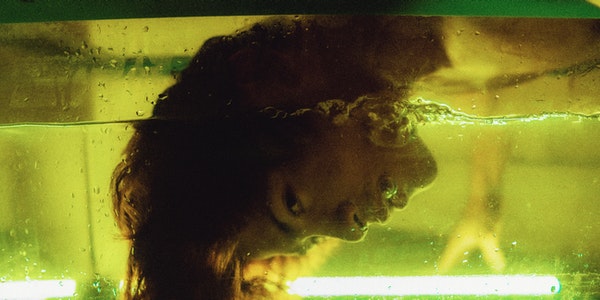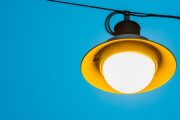The Advantages of LED Lights for Fish Tank Lighting
- High brightness: The spectrum of LEDs is almost entirely concentrated in the visible light frequency band, and the efficiency can reach 80%-95%, while the visible light efficiency of incandescent lamps is only 10%. The theoretical limit efficiency of the visible light of the LED can reach at least 500lm/W, which has a considerable energy saving effect.
- High purity: The color is pure and lifelike, restored to natural colors. Unlike the full-band spectrum of an incandescent lamp, a typical LED has a narrow spectrum and emits very pure light.
- Multi-color: When colored light is needed, by controlling the size of the forbidden band width of the semiconductor material of the semiconductor light-emitting layer, light of various colors can be emitted with higher chroma.
- Multiple changes: The color temperature can be adjusted to meet the needs of various occasions.
- Low heat: Compared with traditional lamps, it can be called cold light source.
- Low power consumption: The power consumption is only 1/10 of that of traditional fluorescent lamps or halogen lamps, and the current light efficiency has exceeded that of fluorescent lamps.
- Long life: The service life is more than 100 times that of ordinary bulbs.
●Small size: flexible application, small size, flat packaging, easy to develop into light, thin and short products, made into points, lines, and surfaces in various forms of lamps.
The role of LED fish farming lights
Simulated sunlight: It simulates the growth and survival environment of fish in nature (river, lake, and sea). In terms of simulated lighting, you need to turn off the led lights at night. Ultraviolet led lights can kill bacteria: Ultraviolet led lights can kill a variety of germs and reduce the incidence of fish.
Helping the growth of water plants: If the water plants are also raised in the aquarium, then the light can help the water plants grow. It is best to turn on the light for more than 4 hours a day, and 8 hours is the best. In addition, it can also play a decorative role to make the fish tank more vibrant.
How to Choose a Good LED Aquarium Light?
the Advantages and Disadvantages of Various Lamps
When you step into the world of light sources and water plants, you will find that the knowledge hidden in it is beyond your imagination. When the light source is used in the cultivation of aquatic plants, there may be many problems encountered.
After we gradually understand the general knowledge of aquatic lanterns and aquarium lights, and the meaning of the terms related to light sources, when we are elected the aquatic lanterns, we become much clearer, but when we really want to use the aquatic lanterns, we will find that problems continue. Then, for example: “How many watts of water plant light should I use for my water plant tank?” This is the most common problem that many people encounter when buying lamps. Although they know that the higher the wattage, the better the photosynthesis efficiency. I don’t know at least how much is enough.
The power is low, and the effect is not enough, the aquatic plants cannot carry out good photosynthesis, and cannot grow well. If the power is high, the expenditure is wasted and it is easy to damage the water plants.
the Advantages and Disadvantages of Various Lamps
The choice of LED Aquarium Lights
Tips for choosing aquarium lights
Step 1: Calculate the wattage of the aquarium lamp required by the aquarium
In fact, there is a rough formula widely circulated in the aquaculture industry for the wattage demand of aquatic plants, which can calculate the theoretical value of demand. Remember, it’s just theoretical value.
For fluorescent tubes (T5/T8) (similar to other types of lamps):
Shallow tank: For those whose water depth is less than 30cm (excluding bottom sand), the wattage of the grass lamp is about 0.5~0.6W per liter of water,
Medium tank: For those with a water depth of 30cm~40cm, the wattage of the grass lamp is about 0.7~0.8W per liter of water,
Deep tank: For those with a water depth of 40cm~50cm, each liter of water needs about 0.9~1.0W of water grass lamp wattage.
Reminder: The green water plants are calculated at the low standard, and the red water plants are calculated at the high standard.
The calculated result can be used as a reference value, but it is better to compare it with the actual condition of the aquarium. If all the plants in the aquarium are negative plants, the calculated value may be slightly higher than the actual demand. If the aquarium is planted with bright aquatic plants, the calculated value may be slightly lower than the actual demand. At this time, you should determine how much light you need based on the theoretical value and the actual situation of your water plant tank.
Step 2: Choose the type of lamp
Through the previous statement, we learned that as long as the spectral peak of the lamp output matches the spectral range absorbed by chlorophyll a and b, the light emitted by the lamp can satisfy the viewing needs and can be used as aquatic plant light for aquatic plant cultivation.
Through the introduction of various lamps, we also learned the advantages and disadvantages of various lamps. As long as you choose the suitable aquatic lantern according to your own conditions and through comparison.
Compare the advantages and disadvantages of various lamps
- Fluorescent lamp
- Advantages: The most prominent one is energy saving. The light efficiency is 5 times that of ordinary bulbs and the life span is 8 times that of ordinary bulbs.
- Disadvantages: Mercury pollution during the production process and after use and disposal, and the lights flicker, which affects eyesight.
- The advantages and disadvantages of metal halide lamps.
2.1) Advantages:
2.1.1. Bright enough
2.1.2. The decay is slow, if it is not broken, it can be used forever without changing the bulb
2.1.3. Good lighting effect, sparkling water
2.1. 4. It can be hung higher than the lamp panel, so it is convenient to reach out and take care of it at any time
2.1.5. Strong lighting penetration, metal halide lamps must be used for water depths above 60CM
2.1.6. Compared with fluorescent lamps, metal halide lamps are still energy-saving. Metal halide lamps generally do not need to be replaced. The tube must be replaced after fluorescent lamps have been used for a period of time, otherwise the water plants will not grow.
2.2 ) Disadvantages:
2.2.1. High heat
2.2. 2 dazzling, especially bad for children
2.2.3, the heat is large, the temperature rises in summer
2.2.4. Red grass is not red
2.2.5. The quality of metal halide lamps currently on the market is uneven
- LED lights
3.1 Advantages:
3.1.1 Small size and very light
3.1.2 It consumes no more than 0.1W of electrical energy, low power consumption
3.1.3 Under proper current and voltage, the service life of LED can reach 100,000 hours, and the service life is long
3.1.4 High brightness, luminescence technology, low heat
3.1.5 Made of non-toxic materials, environmentally friendly and recyclable.
3.1.6 Long life: LED light source is called long life lamp.
3.2 Disadvantages:
The price is expensive, it needs constant current drive, and the heat dissipation is not good and it is easy to light decay.
- Xenon lights
4.1 Advantages:
4.1.1 Low wattage, strong brightness, and its service life is 10 times longer than traditional halogen bulbs.
4.1.2 The color temperature is similar to sunlight, with more green and blue components.
4.1.3 The luminous flux is more than twice that of the halogen lamp, with relatively high energy density and light intensity, and the operating current is only half of the halogen lamp.
4.2 Disadvantages:
More expensive
- PL lamp (energy-saving fluorescent lamp)
5.1 Advantages:
5.1.1 It has high luminous efficiency (5 times that of ordinary bulbs), and the energy-saving effect is obvious.
5.1.2 Long life (8 times that of ordinary bulbs),
5.1.3 Small size, easy to use and other advantages.
5.2 Disadvantages:
The tube is short, suitable for small tanks only.
The Relationship Between LED Plant Lighting and Algae Growth
-
Light
Light is the energy substance that algae rely on for their livelihood. Without light, it would be impossible for the algae to preserve life and growth. Algae use light to perform photosynthetic effects, and can synthesize inorganic substances into organic compounds, which will continue to be used to produce cell components, and then these components will be used for growth and scent effects.
However, not all light meets such needs, because to understand the relationship between light and algae cultivation, we must first understand what algae need for light. The light must be absorbed by the algae before it can become the energy substance for the growth of the algae.
The light is not single-color light, but a kind of multiple-color light, white light composed of seven single-color lights such as red, orange, yellow, green, blue, indigo, and purple. Only the red and blue light can be absorbed by the chlorophyll of the algae, because this has the most photosynthetic effect on the algae, but the green light will be reflected by the chlorophyll of the algae, and the benefit is minimal or no benefit.
Scientists have discovered that to form white light, it is not necessary to have all the seven single-color lights mentioned above. As long as there are three colors of red, green, and blue, the white light can be formed, because these three colored lights Light is “red, green and blue of light.” Fluorescent lamps for general lighting can use different fluorescent agents to simultaneously produce red, green, and blue colored light, making the tube incandescent. Such a tube is called a “three-wavelength” tube.
-
Light quality
Light quality is the “quality of light”, used to describe the different nature of the lighting effect caused by the different spectral composition of light. For example, the same three-wavelength lamp, if the proportions of the red, green, and blue spectrum are different, the light colors they emit will not be the same, because this can produce different lighting effects.
The lighting effect required by algae is mainly to increase the rate of photosynthesis. Therefore, when the proportion of red and blue spectrum flashes in fluorescent lamps is higher, and the proportion of green spectrum is lower, this kind of light will affect the growth of algae. The more helpful. For example, a plant lamp (two-wavelength tube) can convert electrical energy into light energy and concentrate on generating red and blue light (for example, red light 50%, blue light 50%). This lighting in the correct direction has an effect on algae growth. Quite helpful. If the electric energy is converted into light energy, a small amount is used to generate green light (for example, red light 40%, blue light 40%, green light 20%), its fertility effect will be relatively reduced.
The same is a plant lamp, because the ratio of red and blue light is different, the impact on algae cultivation is also different. It is known that red light has an enhanced effect on the “assimilation effect” of algae, but blue light does not. The assimilation effect refers to the metabolic process in which algae convert the nutrients (including photosynthetic products and fertilizer components borrowed from the outside world) into cellular components. Because this red light helps the algae growth effect, it will have more influence than blue light. In other words, in all the light sources used for cultivating algae, the light quality cannot lack red light as a composite component, otherwise the growth of algae will be very difficult.
3. Algae and luminosity
The intensity of light is called “luminosity.” Different algae have different requirements for luminosity, and some require strong light ability to grow and are called positive algae, such as red butterfly and clover. Some need low light to grow, called negative algae, such as moss, iron crown. Some algae require a minimum growth luminosity between the two, called facultative algae, such as willow and crowngrass.
In order to grow all kinds of algae, the light intensity of the algae tank should be strong, not weak. Some people say that negative algae can only be cultivated with low light, not strong light. In fact, the use of strong light does not necessarily cause damage to negative algae, but sometimes it will increase its growth effect.
The photosynthetic efficiency of the negative algae initially increases with the increase in luminosity, until the liquid concentration of carbon dioxide is limited. However, with sufficient carbon dioxide supply, when the luminosity increases again, its photosynthetic efficiency may no longer continue to increase, reaching the lowest luminosity of maximum photosynthetic efficiency, which is called the “maximum luminosity” of negative algae. The lighting that exceeds the maximum luminosity generally only causes the consumption of electricity (electricity), and it does not cause any damage to the negative algae.
However, there is a special case that can cause damage to negative algae. That is, when the luminosity is extremely strong (the maximum luminosity is extremely high), this damage will be decomposed due to the damage of the chlorophyll by the “photooxygenation effect”, because this algae will undergo yellowing, which is called the “overexposure effect”. If the positive algae grows satisfactorily, but the negative algae has widespread yellowing, it may be the reason why the luminosity is too strong and the overexposure effect is induced. However, it is not easy for this phenomenon to occur in the algae tank.




